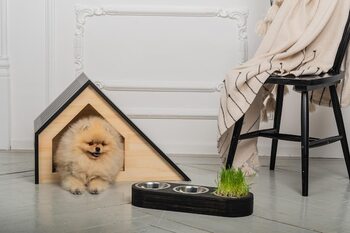Urban spaces: the art of lighting your home with creativity

Lighting your home in an urban space may seem like a challenge, but with ingenuity and creativity, you can transform any corner into a cozy and stylish retreat. From choosing lights that highlight the architecture to incorporating natural elements that soften the atmosphere, the possibilities are endless. This article will guide you to explore the art of lighting your home, combining functionality and aesthetics to create an environment that reflects your personality and lifestyle, optimizing every square meter available.
1. The importance of lighting in small spaces: practical tips.
Lighting plays a crucial role in the perception of space, especially in small areas. An intelligent design of light can make a small room appear more spacious and inviting. To achieve this, it is advisable to opt for light sources that are distributed evenly, avoiding dark spots that can visually close the space. Recessed lights or wall sconces are excellent options to maximize the use of the area without taking up additional floor space. Additionally, using warm tones helps create an enveloping and relaxing atmosphere, ideal for enjoying your home.
Another practical tip is to play with layers of light. Combining different types of lighting—general, accent, and ambient—adds depth to small spaces. For example, pairing a floor lamp with pendant lights and LED strips can define specific areas within a single environment, creating functional zones without the need to physically divide the space. Additionally, using strategically illuminated mirrors can multiply natural light and provide an extra sense of spaciousness. This way, each corner is transformed into an attractive and well-defined place, optimizing both the aesthetics and functionality of urban living.
2. Sources of natural light: how to make the most of daylight.
To make the most of daylight in an urban space, it is essential to maximize the entry of natural light through the strategic placement of windows and the use of light colors on the walls. Choosing lightweight curtains or blinds that can be fully opened during the day allows light to flow freely. Additionally, consider using mirrors in strategic locations; these can reflect light and create a sense of greater spaciousness in small rooms. Incorporating elements like skylights or light tubes can be an effective solution for darker spaces, ensuring that every corner receives that much-desired bright touch.
Vegetation also plays a key role in connecting us with the outdoors and improving the quality of the environment in our homes. Placing plants near windows not only beautifies the space but also takes advantage of natural light to promote their growth. Additionally, you might consider using translucent panels or dividers that allow light to pass between different areas without completely obstructing it. In the end, illuminating your home with natural light is not just about filling spaces with brightness, but also about integrating elements that enhance that luminosity and create a harmonious and balanced environment.
3. Lamp styles that are trending in urban environments.
In urban environments, where space is premium and aesthetics play a crucial role, lamps become key pieces in defining the style of a home. Currently, minimalist design pendant lamps are gaining prominence, especially those that combine materials like metal and glass. This style not only saves visual space but also allows light to flow freely, creating an open and airy atmosphere. Choosing a pendant lamp with a matte finish or in black can add an industrial chic touch that resonates perfectly with the contemporary architecture of many cities.
On the other hand, floor lamps have made a strong comeback, adapting to different spaces within the urban home. Models with sculptural or retro shapes have become especially popular, as they not only serve as a source of light but also act as decorative elements in their own right. Integrating a floor lamp into strategic corners can help create cozy zones ideal for reading or relaxation. Furthermore, by opting for dimmable or smart bulbs, you can adjust the light intensity according to your mood or activity at the moment, thus reaffirming functionality without sacrificing style.
4. Ambient lighting vs. functional: find the perfect balance.
Lighting in an urban home should not only be functional but also has the potential to create unique and cozy atmospheres. The key lies in finding the balance between ambient lighting, which sets the tone and warmth of the space, and task lighting, necessary for performing specific tasks. Consider using recessed lights or floor lamps in areas where you need clarity, such as the kitchen or the study. At the same time, complement these sources with soft light through wall sconces or LED strips on shelves, thus creating a more relaxing environment in areas like the living room or the bedroom.
To achieve this perfect balance, it is essential to think strategically about how and where to use each type of light. For example, you can choose an elegant pendant lamp over a dining table that not only provides good lighting during dinners but also serves as a decorative focal point. Additionally, incorporating natural elements like plants can soften the harshness of the urban environment while benefiting from the indirect light they reflect. Remember that each space is unique; experimenting with different intensities and color temperatures will allow you to personalize your home to suit your needs and aesthetic preferences.
5. Decorative elements that enhance light in your home.
To enhance the light in your home, decorative elements play a fundamental role. Mirrors are perhaps one of the most effective allies; by reflecting natural and artificial light, they can make a small room feel larger and brighter. Placing a mirror in front of a window or in a corner where it receives light can multiply its effect, creating a more airy and inviting atmosphere. Additionally, using decorative frames in different styles can add a personal touch that complements your overall aesthetic.
Another decorative element that not only serves to beautify but also to illuminate is the choice of lightweight textiles and light colors in curtains and upholstery. Opting for fabrics that allow light to pass through, such as organza or linen in soft tones, will help maximize the brightness of the space. Similarly, metallic accessories, such as table lamps or shiny vases, can effectively capture and disperse light. By combining these elements with strategic lighting—such as spotlights directed towards the walls or recessed LED lights—you can create a play of light and shadow that enhances every corner of your urban home.
6. Sustainable solutions for mindful lighting in the city.
Sustainable lighting has become a priority in modern cities, where environmental awareness and energy savings are essential. Choosing energy-efficient LED bulbs not only reduces ecological impact but also offers a wide range of shades and styles that can complement any decor. Additionally, smart lighting systems, which allow for adjusting brightness and color through mobile applications, provide flexibility to adapt to different times of the day and activities. Integrating these elements into your urban home not only enhances a more pleasant environment but also helps to reduce the carbon footprint.
Another strategy for achieving mindful lighting is the use of solar-powered light sources. These options are ideal for outdoor spaces such as balconies or terraces, where natural light can be harnessed during the day to illuminate at night. Additionally, incorporating recycled materials into your fixtures can add a unique and personalized touch to your home, reflecting a contemporary and responsible style. By choosing sustainable solutions for urban lighting, you are not only enhancing your personal space; you also contribute to the well-being of the urban environment and promote more planet-friendly practices.
7. How to create different environments with smart technology: the future of urban lighting.
Smart technology has revolutionized the way we perceive and use lighting in our homes, especially in urban contexts where space is limited and functionality is key. By incorporating lighting systems controlled by apps or voice assistants, you can create different environments with just the press of a button. From warm and soft lights for a relaxing night to brighter tones to energize your days, the ability to adapt the light to your mood or activity transforms any corner into a versatile space. Additionally, smart systems allow you to schedule times and adjust the intensity according to your daily needs, thus optimizing every square meter.
Another fascinating aspect of smart technology is its ability to integrate with other elements of the home, such as automated curtains or ambient heating. For example, by combining lighting with motion sensors and changes in the external environment, you can create a fully immersive experience that responds to your presence and preferences. Imagine coming home after a long day and being greeted by a soft glow that lights your way; or enjoying a romantic dinner with lights that automatically dim according to the time. This synergy not only enhances your quality of life but also adds a modern and elegant touch to your urban home, demonstrating that the future of lighting lies not only in its functionality but also in its ability to adapt to you.



